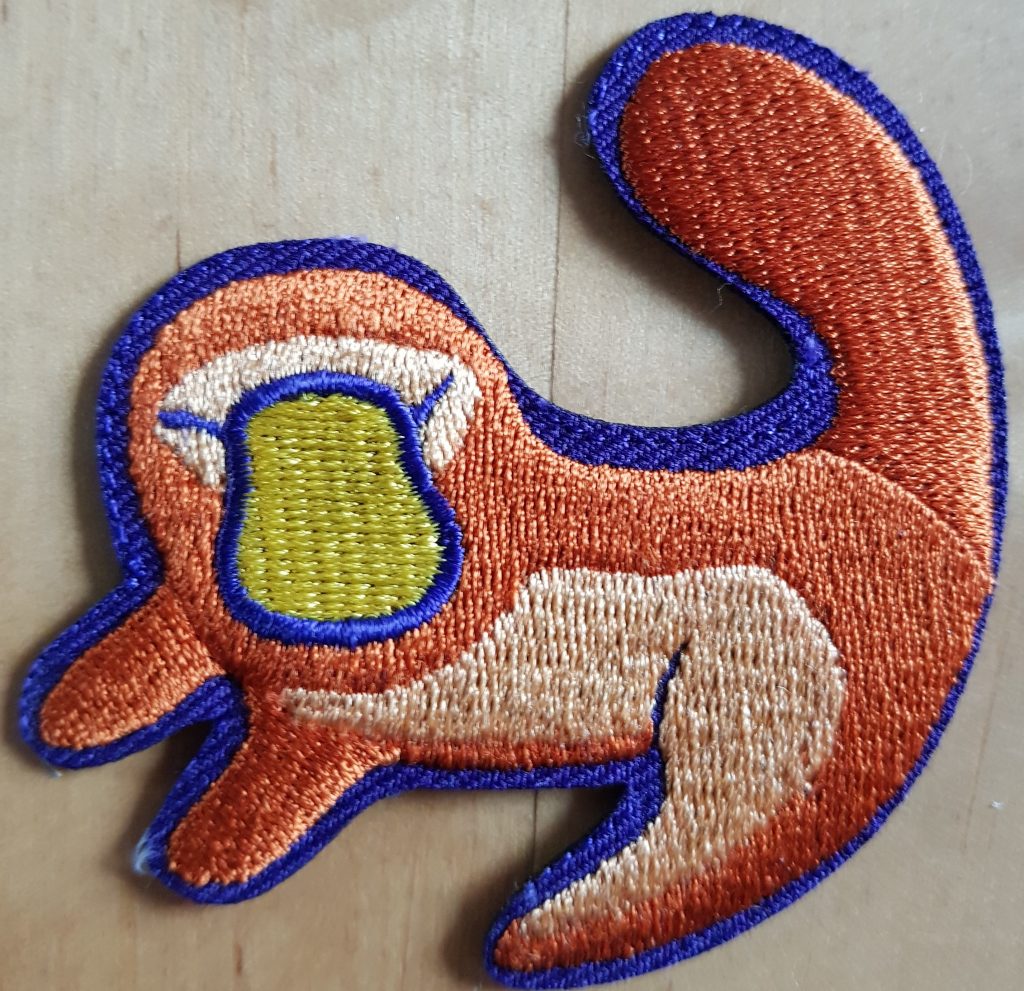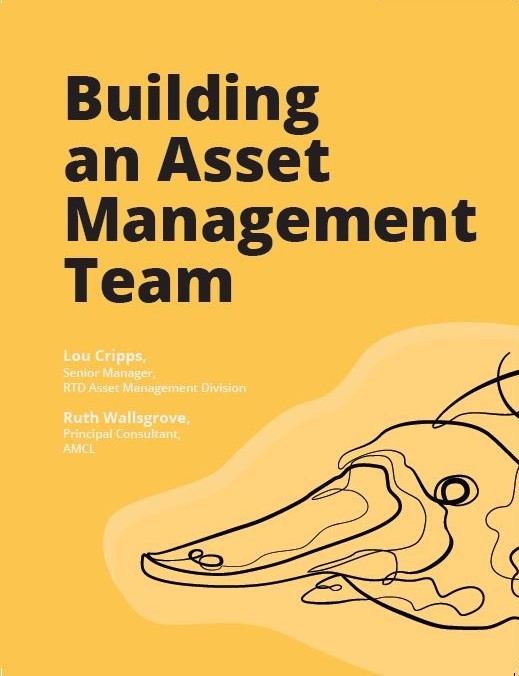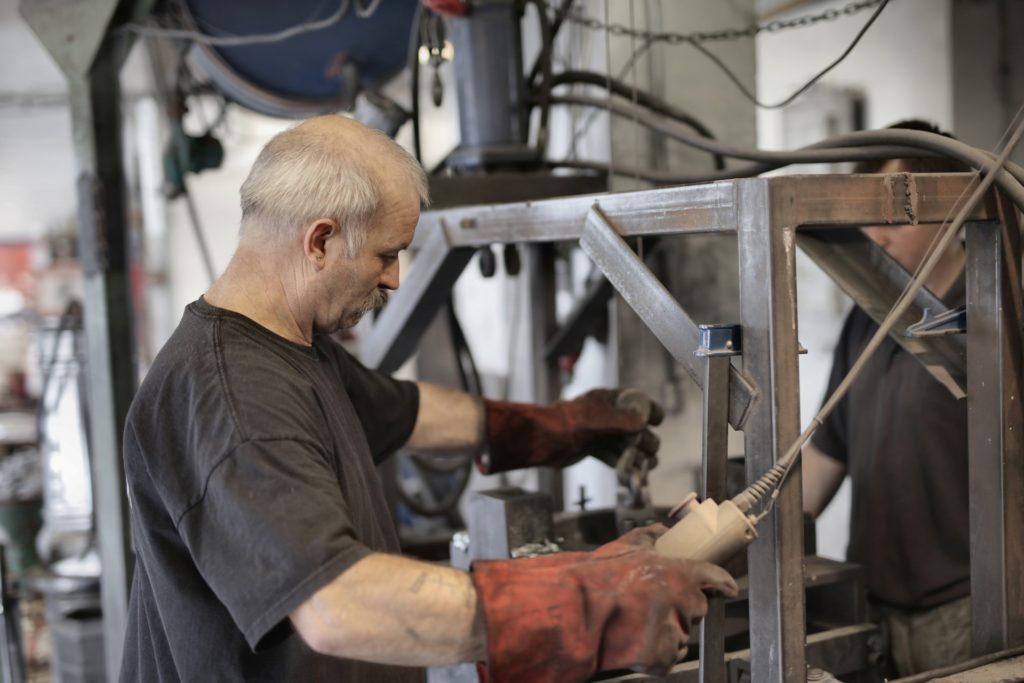
When I managed a small subsidiary company in the 1990s, I read a book by ex ICI chair John Harvey Jones on values. He said – and I am paraphrasing wildly – that any useful organisational value must have an opposite which would work in other circumstances, otherwise it’s so much mom-and-apple-pie stuff you can’t disagree with, but which does not motivate or drive very much, either.
When my team tried articulating our collective values, we all agreed on loyalty – which the marketing men said was not an appropriate marketing slogan, so I knew we were on to something. What could be (in other contexts) a useful opposite? Impartiality, for example. Loyalty was something we felt, and it also turned out to be something our clients could feel (and appreciate). Someone else could contribute impartiality.
As we face a puzzling current widespread refusal of North American infrastructure agencies to set clear SMART targets, we have wondered aloud if it’s because they don’t want anything they could fail at. I begin to wonder if it’s worse than this, a lack of clear purpose or value at all.
I think I have just spotted the worst yet: a transportation agency that’s adopted ‘We Make People’s Lives Better’. Their top leadership are very proud of it, since who doesn’t want to Make People’s Lives Better? The detail of what counts as better, which people, how we will do this – and what we do if one lot of people want something that would adversely affect another group of people? Well, don’t be negative, we can work that all out later. (And don’t even bring up all the critiques of naïve utilitarianism.)
Do we want a bus company to ‘make our lives better’, or do we just want them to concentrate on running an efficient and comfortable bus service?
For the moment, we asset managers can play the game of what, if anything, would not fit under this rhetoric. How could it even in theory rule out a bad option?
Yeah, it was a high-priced consultancy that facilitated this, but why does this even feel right to the executive, apart from being a meaningless feelgood statement?
Is it a triumph of the marketing men, or a complete dereliction of duty?

Every infrastructure project causes damage – to society, to the environment. We know this. A new road means loss of green space. It disrupts existing commerce and communities. Steel and cement are toxic to the environment. We accept this damage as a necessary cost of achieving a larger community good.
For too long, we have accepted this ‘larger community good’ to be the short term jobs that are created. But as shown in the last two posts, not only is this jobs gain illusory, it causes its own damaging distortions in the economy. Construction workers might gain, but other workers lose.
So if we are to support a new infrastructure project it must be because of the greater, ongoing benefits that the infrastructure will provide – after it has been constructed. For evidence based decision making, this is where we must seek our evidence.
How do we do this? What sort of evidence should we seek?

When a government runs a ‘balanced budget’ its spending (and the jobs that this spending creates) is compensated for by its taxing (and the jobs that this taxing destroys). It follows that the justification for infrastructure can never be the jobs it creates for it doesn’t create any – it simply shifts jobs from one part of the economy to another.
The job losses are not easily measured but they are real. As asset managers we see it all the time, when, following an infrastructure spending splurge, governments try to claw back the money spent by reducing funds for operations and maintenance. So that not only is there not only no net increase in funding and jobs but we are now left with distortions in the economy – more assets to maintain but smaller budgets with which to do it.
We can see this level of distortion when it happens in our own organisations. But impacts extend beyond those organisations that benefit from the infrastructure spending, to those many companies, associations, individuals that now experience higher taxes or lower government spending in their areas or lower demand because spending has been shifted elsewhere. This is difficult to see and where logic must apply.
How can we be sure that spending money on a new infrastructure project trumps spending the same amount of money on hospital staff or teachers, out-of-work youth, or any one of a number of other spending opportunities?
For the distortions to be worth it to the community, we must be pretty sure of the ongoing value of the infrastructure to the community – see Jeff Roorda’s comments to the previous post.
And share your own suggestions

How often do you see arguments such as that spending, say, $100m will create Y,000 jobs? Rarely do we even question the logic, let alone the arithmetic. But we should do both. For if inserting $100m into the economy creates jobs – and it does! – then it must be equally true that extracting $100m reduces jobs. It follows that if the Government is running a balanced budget, then money into the economy through government expenditure is equal to money taken out of the economy through taxes to finance this and there is no net increase in jobs. The situation is worse if the Government is aiming at a budget surplus, for then more jobs are lost than are created.
The jobs created are nicely gathered together and visible for the project at hand, they are even amplified by media exposure, but what you don’t see are the jobs that are lost, for these are spread across the economy.
Let’s face it, to keep its budget under control it will either have to cut back on other expenditure or raise taxes and charges. (Think back to the last ‘stimulus’ bill, is that not what happened a year or so later? The government encouraged construction then later reduced funding affecting maintenance amongst other things.)
And as to the secondary round of expenditure – by which those receiving the first tranche of largesse are expected to go out and spend, thus creating more jobs, what about the secondary effects of the jobs that are lost?
Yes, we want to believe that we are making the world better by building infrastructure and creating jobs but are we in danger of letting wish fulfilment overcome logic?
Moreover, when we are losing jobs all over the country in order to put up a new infrastructure project, how can we be sure that we are gaining, in real community benefit terms, more than we are losing? Maybe we are not?

Some days, it all feels quite hard. We know that infrastructure Asset Management requires a change in attitudes, in culture, and that’s no fun to anyone who just wants to get on and manage assets well. I teach AM, and always say that the tricky bit is attitudes, using co-operation and longer-term thinking as two culture shifts we need if we don’t have them.
But some days it seems more than this. Why does IT think IT assets are special, and so shouldn’t be subject to the same AM planning and prioritisation processes? Why doesn’t engineering care about information – not just as-built, but the need for any evidence for their decision processes. (“How do we know what benefit we will get from better information?”, an engineering department wrote recently in opposition to a data improvement initiative.) Why is Urban Planning not interested in any conversation about the current state and utilisation of the physical assets, and how did they come to despise maintenance (why does anyone despise maintenance)? Why do operations, executives think they don’t need KPIs? What do they think they are arguing for?
AM is on the side of good, evidence-based rationalism: wanting to do the right thing based on logic and facts. It is very hard for us to deal with people who are not.
Some days it feels rather like attempting to argue with an anti-vaxxer, or a Trump supporter.
Obviously, when they look at us, they don’t see champions of logic and good sense. Maybe they see a threat – but what do they tell themselves? Answers, please….

Sorry for long absence, I’m not dead, just been otherwise engaged. I am currently writing ‘The story of Asset Management: the first ten years’ (1984 – 1993) and as I read back through my old journals, it is easy to see why asset management has captivated me for so long and I thought some of the stories might captivate you, too. For example, try this:
1988 Scene: NSW Parliament House
In 1988 I attended a very heated debate on accrual accounting presented at the NSW Parliament House for elected members and selected others. It was memorable for a fight that almost broke out in the house. After much discussion on the pros and cons, one section of the audience was showing considerable disquiet. Eventually one of the group, a politician, stood up and angrily and loudly stated “If you reveal accrued liabilities we will be forced to do something about them”.
At this, the accounting professor on the platform, Bob Walker, replied neutrally “Accrual Accounting is simply an accounting system, it provides information, what you do with the information is up to you”. This was too much for the highly agitated politician who shouted “You’re just like Pontius Pilate, washing your hands of the whole affair”. Cheers broke out from that section of the audience.
What can we learn from this?
Now the academic was correct, if naive. It is true that accounting systems provide information that enable but do not enforce action. However awareness of information can be a propelling force to action, which the politician instinctively recognised. It is the old ‘ignorance is bliss’ argument, if no-one knows something needs to be done, then you cannot be blamed for not doing it. Once the facts are in the public domain, though, they may be far more difficult to ignore.
The information we develop as asset managers also presents imperatives to action – after all that is why we research, analyse and develop it. So we must be prepared for, and learn how to deal with, reactions like that of our angry politician and not go into the fray unaware. Yet how many times do we do precisely that?
The way in which our data or facts are presented is important, too. There may be no difference – in point of fact – between the glass that is half empty and the one that is half-full but the connotations are widely different. The truth is that facts can never ‘speak for themselves’. The language they speak and the message they give depends crucially on the way they are organised and presented. And this organisation and presentation is what politics is all about – influencing reactions. This is as true of internal, departmental politics as it is of larger scale national and international events.
We have developed a poor habit: decrying something as ‘just politics’ as if by doing so we can ignore it. But everything is politics! Better to learn how to play the game. That is, the game of presenting our information in such a way that the reaction we get is the one that we want.
It doesn’t happen by accident.

Building an Asset Management Team is now available as print on demand – a glossy paperback – from Amazon. All proceeds to Talking Infrastructure.
“A practical and lively guide for anyone who needs to do infrastructure Asset Management. It tackles who you need and why you need them.”
“This should be a pocketbook series” – Tina Ignat, Chicago METRA RailRoad
“It isn’t like anything I have ever read on asset management. I wish it was available when we started out on our AM journey!” – Krista Halayko, Manitoba Hydro

Hello Ruth,
We are currently working to justify the spend for improving our AM program. We would like to utilize other utility benchmarks for efficiency, productivity & other improvements from Asset Management implementation. We would use this to estimate what monetary value we can expect from improvements to operations. Thanks!
Joe.
Dear Joe,
Always glad to hear from you, and we can send you the benchmark data we have.
However… looking to long-term, integrated, whole life cost-based Asset Management for short term operational savings is maybe not the place to look for benefits, unless you can already see inefficiencies in maintenance spending. Thinking more in terms of planned, proactive maintenance rather than depending on reactive maintenance may save a lot of trouble, but it is not guaranteed to save on budget. The benefits of being more proactive are more likely in terms of better customer service and managing risks so they do not cause you issues down the road.
Asset Management might be more realistically promoted as better customer service with the limited resources an organisation has; optimising effort so you target capital where it is really needed (and not wasted where it is not needed); better community, regulator and government trust in the capability to deliver what is required now and into the future.
That an organisation seeks immediate operational savings can be a symptom of pre-Asset Management thinking – thinking in terms of today’s budgets rather than service, risk & the longer term. The problem is that people may not see that poor customer performance, stakeholder mistrust and high risks actually do cost a lot of money, but they aren’t always accounted for. (Until, suddenly, in a crisis, it’s obvious how very much they cost…)
Happy to support in any way we can – I hope this might be useful!
Warm wishes
Ruth
Benefits of good Asset Management can include higher profits and share value, lower insurance premiums, getting out of a catastrophe intact – but does it ever save on next year’s budget?
Maybe through analysing the data and realising how inefficient you are – anyone actually done this?
And – while we’re asking – did anyone ever save money on implementing a work management IT system (as opposed to making it easier to organise maintenance tasks)?

Popularity can be the death of a good idea.
Make a term, or an idea, popular and any number of people will latch onto it and attach it to their own agenda – and it doesn’t matter if their agenda is diametrically opposed to yours. In fact, it might serve them better if it is.
For example, I have seen instances of the term ‘asset management’ taken over by developers, applied to office cleaning, and, of course, to maintenance itself. The one I really objected to was the developers. Figuring that their own term had come into disrepute this particular group had decided to take ours!
We see what we want to see
Another problem with communication of ideas is that we tend to see what we want to see.
Years ago the Public Accounts Committee produced a report showing how much would need to be spent on hospital infrastructure renewal IF nothing was done by way of better maintenance, accounting and planning practices (ie without better asset management). A few days later the Minister for Health, completely ignoring the intent of the ‘if’ statement (as people are sadly inclined to do) profusely thanked the PAC Chairman since this ‘proved’ he needed a larger budget!
On another occasion, I was walking in the city when the State Treasurer dashed across a busy main road to tell me enthusiastically that it was thanks to me that the State had kept its triple A credit rating! What?! I had looked at our asset base and saw a future renewal problem that threatened to dwarf the state’s budget, however the credit agencies had looked at the dollar value of our assets – which we had made visible for the first time – and, ignoring the budgetary impact of restoring the deterioration that had already occurred and would need to be attended to, saw only billions of dollars in assets. We are all subject to this restricted vision. We see what we want to see.
All of this is by way of saying that the term I used almost 30 years ago for accounting for infrastructure has long since been hijacked, and by so many, that it is unwise to continue using it. So, I want to start again with greater neutrality.
The Goal
First: let us be clear about the task – namely to develop financial metrics that drive good infrastructure management and meet the need for financial responsibility and accountability. This requires genuine dialogue between two disciplines – and a listening ear.
Let’s start with a thought experiment
There may be lots of things you like about the current way in which we account for infrastructure, but what don’t you like? Are there problems that it creates for you or your organisation?
What’s your story?

Any maintenance or asset manager knows that the longevity of assets is critically dependent on how well they are maintained. And you don’t have to be a maintenance manager to know that your car needs regular servicing. It is kind of obvious! Yet, when it comes to the important public infrastructure on which we all depend, maintenance is considered dispensable and is the first to be cut in times of financial stringency.
It is all to do with how we account for infrastructure assets. Below is the problem – and how we can overcome it using your asset management plan and condition based depreciation (CBD).
The Problem
It pays to know a little history. When government departments and agencies adopted accrual accounting practices and had to bring infrastructure assets to account for the first time, (In Australia, from 1989) naturally they turned to the private sector, where this had been the practice for many years. And this is where the first problem arose since private sector assets such as plant and machinery are depreciated over their predetermined lifespan until they reach zero or some predetermned salvage value and then they are completely replaced.
Infrastructure assets are different. This does not happen with infrastructure assets which can be kept in service for an indefinite time by piecemeal, if somewhat lumpy, component renewal. What is the age of an asset which may have some components 100 years old and others that were renewed yesterday? What is the life of an asset that can be kept in service as long as you want it to? These are unanswerable questions. They go to the heart of the difference between infrastructure and non-infrastructure assets and require a different accounting approach.
However when infrastructure assets were first brought to account, there was no alternative accounting approach for infrastructure assets, so rather than account for the entire infrastructure system, it was decided to assign each component a definite life and depreciate it as if it were an independent asset. It seemed a practical solution to a difficult problem. But in the process it completely ignored the key characteristic of infrastructure assets which is the interdependence of the components, where the life of a component, and thus the need to renew, is dependent on the other components with which it interacts. In other words, the life of components is indefinite, as is the life of the system as a whole. This does not mean infinite! It just means that you cannot define a life of a component until it reaches the stage of renewal. So depreciation in this case doesn’t work.
You will also notice something else about this approach. The economic life of any asset, as we stated at the beginning, depends on how well it is maintained, and yet maintenance does not feature in this accounting process. This is what makes it so easy for organisations to cut maintenance, since cutting maintenance does not affect the life of the asset, at least not in the accounting system – only in the real world!
The Solution
We need a better system, one that takes equal account of maintenance (minor and major) and renewal, i.e.everything that we need to spend to maintain the functionality of the asset. (In practice ‘maintenance’ and ‘renewal’ are really just different points on a continuum.)
Why do we depreciate assets at all? It is so that we can represent reduction in asset value in any particular period (asset value = its store of future services)
Is there a better way of doing this that recognises the distinct character of infrastructure assets? There is! What better way can there be of valuing the using up of asset services than the cost of making it good again? This is what is called Condition Based Depreciation (CBD). And it is available to any organisation that has a sound, and audited, AM plan as a costless spinoff. Put simply, the condition assessment of your assets that tells you what you need to spend over the planning period to maintain service function and that is in your AM Plan. It covers maintenance, minor and major and renewal and is the cost of making good the consumption of the asset over that period. You choose your planning period and it is updated on a rolling annual basis. The cost of ‘making good’ over the planning period is then expressed as an annuity to give you an annual cost and is the best estimate of real depreciation.
Second history lesson: When the UK water industry was being privatised in the early 1980s the argument was put forward that their assets should not be depreciated because the assets were continously maintained. This was rightly rejected by the accounting profession who said, in effect, ‘prove it’ and that is what a sound, audited AM plan does. Unfortunately some do not recognise the distinction between this and the AM plan backed CBD.
CBD was introduced in 1993 and has been well received by maintenance and asset managers and by practising accountants. It was adopted by the NSW Roads authority and by about a half of NZ’s councils for about ten years (until their accounting society called a halt). It is even provided as the ‘modified’ approach in GASB 34, the standard that introduced accrual accounting into the USA in 1999 but it was rejected by the Accounting Standards Board in 2004 and nothing much happened for the next 13-14 years!
Now it is back into contention because of problems with asset valuation giving depreciation figures that are artificially high and causing councils to be deemed non-viable. These councils are now scrambling to make cuts to their budget, eliminating services and sacking staff – and all at a time of Covid 19! So fictional figures are giving rise to real – and negative – physical effects. We can do better, much better!
Would CBD help bring your maintenance to the fore?
Extra references on CBD
Condition based depreciation for infrastructure assets, 1993
Depreciation of infrastructure assets
Condition based depreciation – the questions
- Extra information is provided here.
- Ask any questions you like and I will answer all of them.

Recent Comments